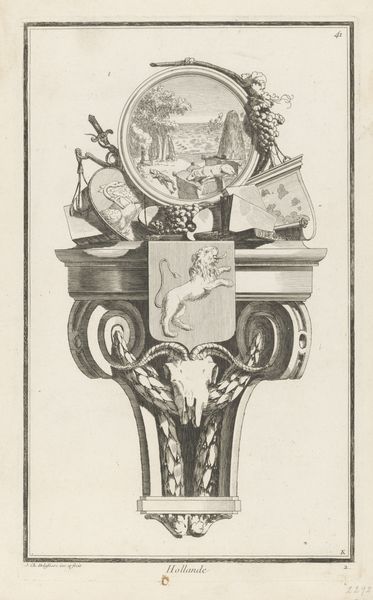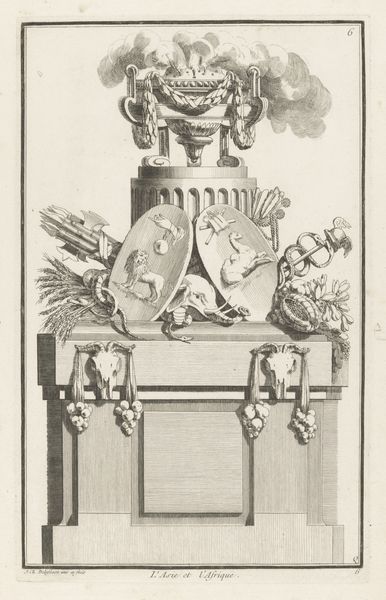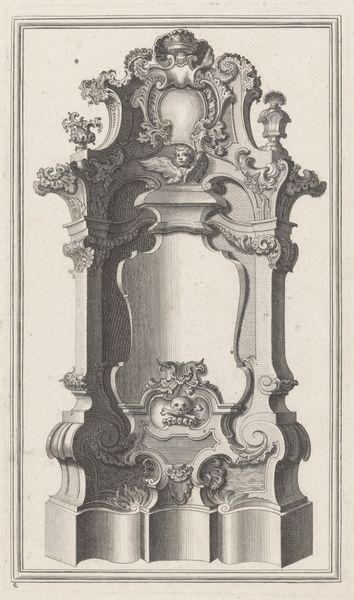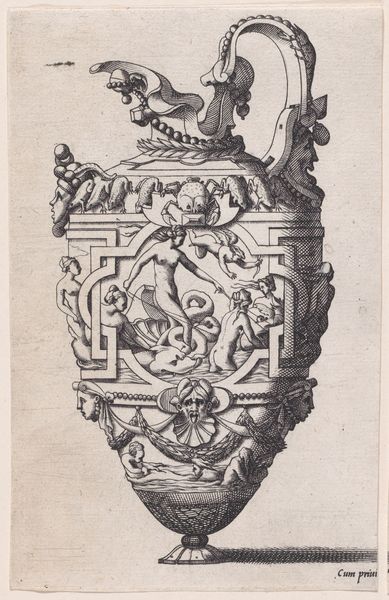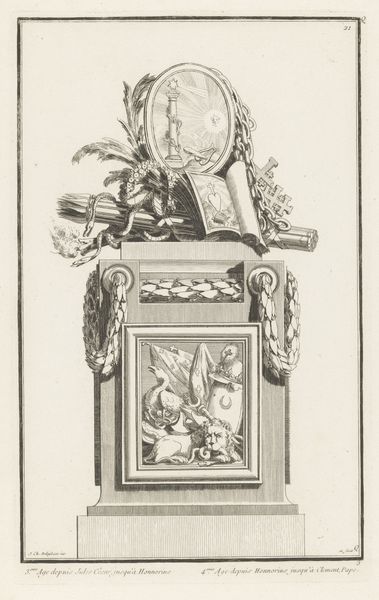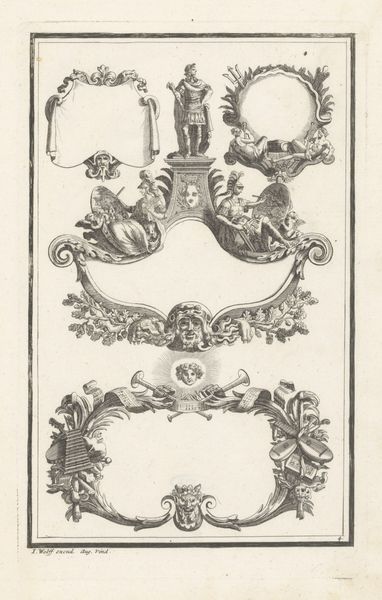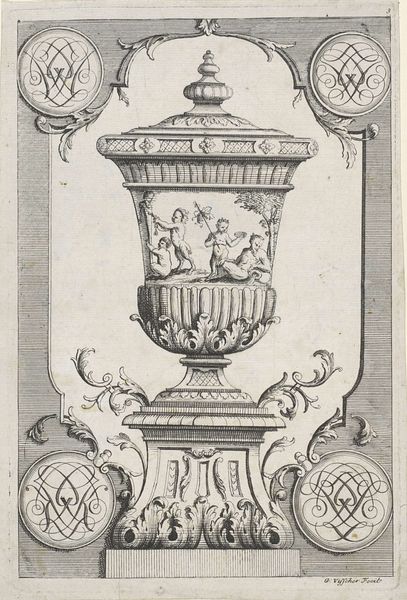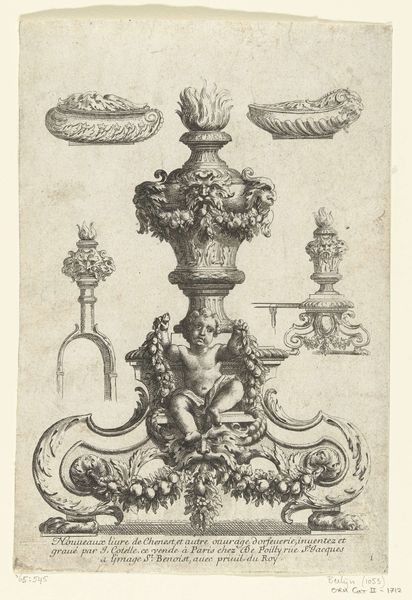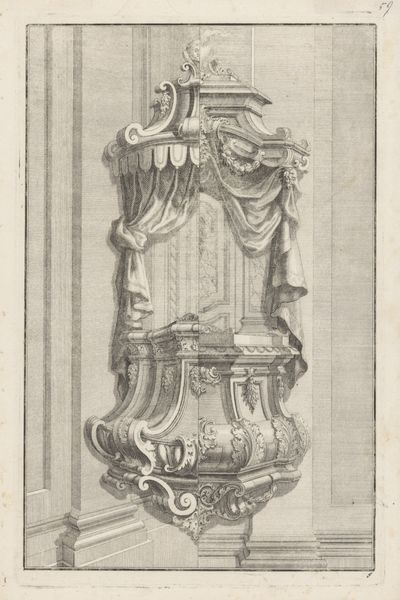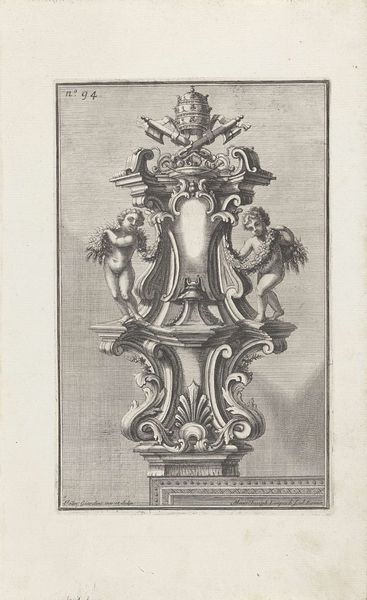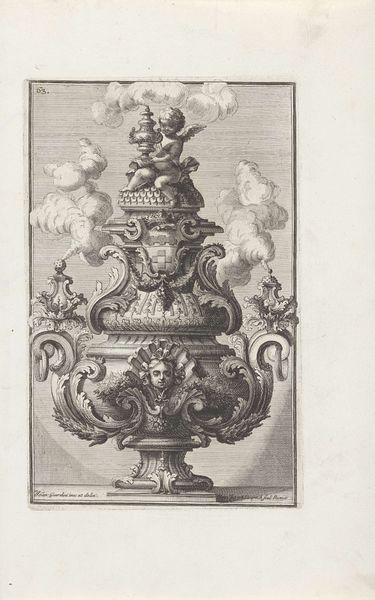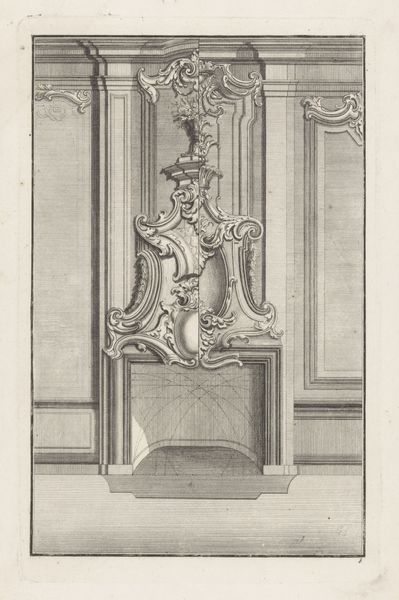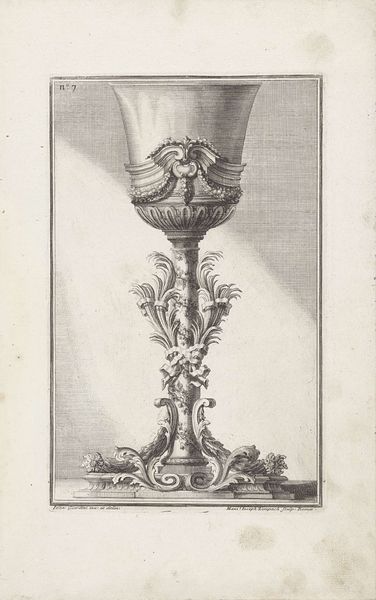
drawing, print, engraving
#
drawing
#
neoclacissism
# print
#
form
#
geometric
#
line
#
engraving
Dimensions: height 380 mm, width 230 mm
Copyright: Rijks Museum: Open Domain
Jean Charles Delafosse created this etching, called ‘Indië,’ in the 18th century. The printmaking process would have involved coating a copper plate with wax, incising an image, and then using acid to bite the exposed metal, before finally inking and transferring the design to paper. The design itself is an allegory of India, which was then in the process of being colonized by European powers. It depicts a ceremonial table, laden with symbolic objects: a caduceus, grapes, and a framed image of a person, among other things. What is most important is how this image was made: through a laborious, repetitive process reflecting the economics of the time. Etchings like this one were relatively cheap to produce, and they circulated widely, helping to promote imperialist fantasies of wealth and dominance. The artist, as an agent of production, played a key role in the dissemination of such propaganda. Thinking about the means of production here helps us to recognize the broader political context of supposedly ‘decorative’ designs.
Comments
No comments
Be the first to comment and join the conversation on the ultimate creative platform.
